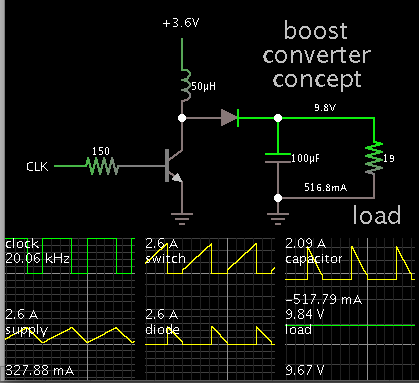cybertron
Member level 3

I'm looking to boost a voltage of 3.6V to 9.5V with a maximum current out of 0 to 0.5A
for battery powered device.
Would like to fine an already built unit if anyone knows of one.
Or a working circuit schematic that someone done or knows of a circuit I can use
I done a search on Google. But? Wasn't able to fine what I needed.
Maybe someone on here know's of such a module that would work for me.
for battery powered device.
Would like to fine an already built unit if anyone knows of one.
Or a working circuit schematic that someone done or knows of a circuit I can use
I done a search on Google. But? Wasn't able to fine what I needed.
Maybe someone on here know's of such a module that would work for me.



